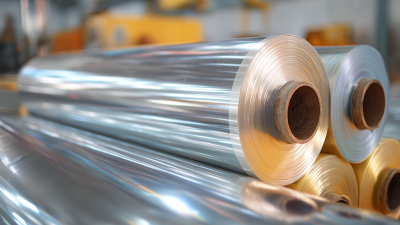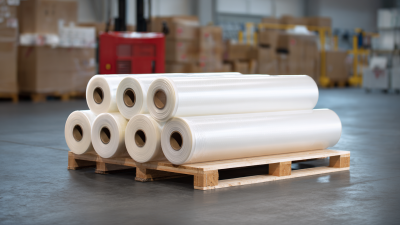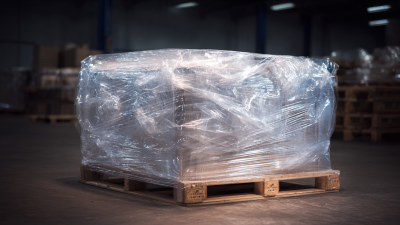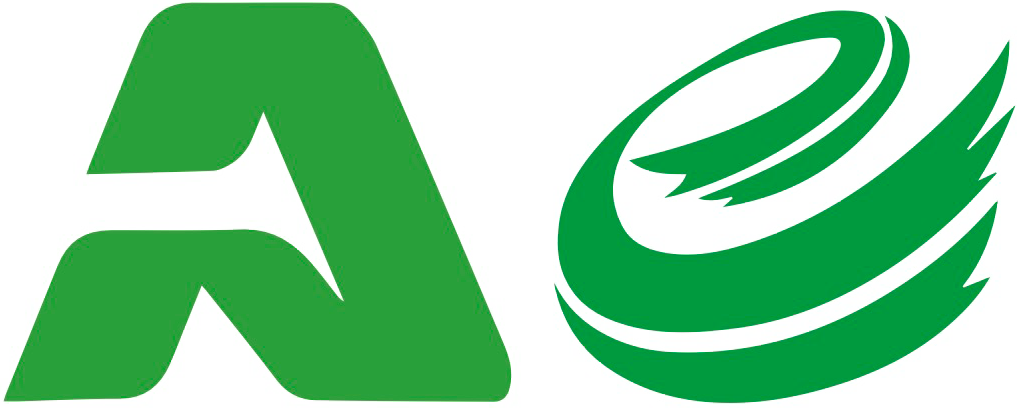 In the competitive landscape of modern business, efficient packaging solutions are more critical than ever. Shrink wrap, a versatile and cost-effective packaging method, has seen significant growth in recent years, with the global shrink wrap market expected to reach $14.5 billion by 2027, according to a report by Grand View Research. With businesses increasingly seeking sustainable and efficient packaging alternatives, understanding the array of shrink wrap solutions available is paramount. Companies are diversifying their packaging strategies in response to consumer demand for eco-friendly options, with biodegradable and recyclable materials gaining traction. This shift highlights the need for businesses to not only consider the type of shrink wrap used but also its environmental impact. As we delve into the alternatives available, it's essential to evaluate critical factors such as durability, cost-effectiveness, and sustainability to select the best shrink wrap solutions for your business.
In the competitive landscape of modern business, efficient packaging solutions are more critical than ever. Shrink wrap, a versatile and cost-effective packaging method, has seen significant growth in recent years, with the global shrink wrap market expected to reach $14.5 billion by 2027, according to a report by Grand View Research. With businesses increasingly seeking sustainable and efficient packaging alternatives, understanding the array of shrink wrap solutions available is paramount. Companies are diversifying their packaging strategies in response to consumer demand for eco-friendly options, with biodegradable and recyclable materials gaining traction. This shift highlights the need for businesses to not only consider the type of shrink wrap used but also its environmental impact. As we delve into the alternatives available, it's essential to evaluate critical factors such as durability, cost-effectiveness, and sustainability to select the best shrink wrap solutions for your business.
Shrink wrap solutions play a critical role across several industries, ensuring the protection and integrity of products during storage and transportation. According to a report by Smithers Pira, the global shrink film market is projected to grow to $16.4 billion by 2026, indicating a rising demand for effective packaging solutions. This growth is propelled by the increasing need for product visibility, tamper resistance, and protection against environmental factors. Industries such as food and beverage, pharmaceuticals, and consumer goods greatly benefit from shrink wrap, which not only enhances shelf life but also improves branding.
When selecting shrink wrap solutions, it's crucial to consider the specific needs of your industry. For instance, food manufacturers must ensure their shrink wrap complies with safety regulations, while e-commerce businesses may prioritize lightweight and recyclable options to reduce shipping costs and environmental impact.
**Tip:** Always conduct a thorough assessment of your product's dimensions and requirements before choosing a shrink wrap solution.
Additionally, incorporating high-quality materials can enhance durability and security. A recent study from MarketsandMarkets highlighted that the demand for shrink sleeves is rising, particularly in labeling applications, due to their ability to conform to unique shapes and increase brand visibility.
**Tip:** Consider investing in custom shrink wrap designs to differentiate your products on the shelf.
| Industry | Common Uses | Benefits | Shrink Wrap Types | Environmental Considerations |
|---|---|---|---|---|
| Food Industry | Packaging food products, protecting against contamination | Extended shelf life, hygienic storage | PVC, Polyolefin | Recyclable materials, food-safe options |
| E-commerce | Protecting products during shipping | Damage prevention, weather resistance | Polyethylene, Shrink Film | Sustainable sourcing, minimal environmental footprint |
| Pharmaceuticals | Securing medical products and devices | Tamper-evidence, sterile packaging | PVC, Polyolefin | Use of pharmaceutical-grade materials |
| Construction | Protecting materials from moisture | Durability, weather resistance | Heavy-duty Shrink Wrap | Recyclable options available |
| Retail | Display and securing goods | Enhanced shelf appeal, product protection | Coloured and Clear Shrink Wrap | Options for biodegradable materials |
When choosing the best shrink wrap solutions for your business, several key factors play a pivotal role in determining the right materials and equipment. First, consider the type of products you will be wrapping.
According to a report by Smithers Pira, the shrink wrapping industry is expected to grow by 4.2% annually, driven by the increasing demand for protective packaging in sectors like food, electronics, and pharmaceuticals. Selecting the appropriate shrink wrap material, such as polyethylene or polyolefin, is crucial for maximizing durability and shelf appeal.
Tip: Evaluate the specific requirements of your products, such as temperature sensitivity or humidity exposure, to choose a shrink wrap that provides optimal protection.
Another crucial factor is the machinery you’ll need for your wrapping process. A recent study by Future Market Insights indicates that semi-automated and automated shrink wrap machines are gaining popularity for their efficiency and cost-effectiveness. Investing in equipment that can handle your production volume and speed needs will enhance your operational efficiency.
Tip: Consider your budget and production scale when selecting equipment; sometimes, leasing machinery can be a more economical choice for smaller businesses or seasonal demands.
In the competitive landscape of modern business, ensuring the integrity of products during transportation and storage is paramount. Data-driven insights reveal that proper shrink wrapping can reduce product damage by as much as 30%. According to a study by the Packaging Machinery Manufacturers Institute, about 25% of products are damaged during transit due to inadequate packaging methods. Implementing effective shrink wrap solutions not only safeguards products but also enhances customer satisfaction by ensuring items arrive in pristine condition.
Moreover, the benefits of shrink wrapping extend beyond mere protection. A report from the Flexible Packaging Association highlights that businesses utilizing shrink wrap can achieve up to 15% cost savings on packaging materials compared to traditional boxing methods. These savings arise from the reduction in packaging waste and the ability to use lighter materials while maintaining product safety. As companies increasingly prioritize sustainability, choosing the right shrink wrap solutions can contribute to a greener operational model, thus aligning with consumer expectations and market trends. Businesses must leverage these insights to develop robust packaging strategies that mitigate damage while improving efficiency and cost-effectiveness.
 When choosing shrink wrap solutions, it’s essential to conduct a cost-benefit analysis tailored to the specific needs of small and large enterprises. For small businesses, budget constraints often dictate a more cautious approach. They may benefit from lower initial investment shrink wrap options, such as manual wrapping techniques or compact machines, which can adequately protect products without overwhelming operational costs. Additionally, small enterprises can leverage the flexibility of smaller-scale supply orders, potentially maximizing their returns on investment while minimizing waste.
When choosing shrink wrap solutions, it’s essential to conduct a cost-benefit analysis tailored to the specific needs of small and large enterprises. For small businesses, budget constraints often dictate a more cautious approach. They may benefit from lower initial investment shrink wrap options, such as manual wrapping techniques or compact machines, which can adequately protect products without overwhelming operational costs. Additionally, small enterprises can leverage the flexibility of smaller-scale supply orders, potentially maximizing their returns on investment while minimizing waste.
Conversely, large enterprises typically face different challenges and opportunities. Their higher volume of packaging needs allows for bulk purchasing, often resulting in lower material costs per unit. Furthermore, investing in automated shrink wrap systems can lead to **significant labor savings** and increased throughput, justifying the larger upfront costs. Large companies can also access premium shrink wrap materials that offer superior protection and durability, positioning them to better cater to a wide range of clientele. Ultimately, understanding the unique context of each business size will guide leaders in selecting the optimal shrink wrap solution that balances cost-effectiveness with operational efficiency.
The world of packaging is undergoing a significant transformation, particularly in shrink wrap technology. Recent industry reports indicate that the global shrink wrap packaging market is projected to reach $12 billion by 2025, driven by the growing demand for lightweight, protective, and eco-friendly materials. Innovations such as bio-based shrink films and advanced sealing techniques are becoming increasingly popular, offering businesses not only enhanced protection for their products but also a more sustainable option for the environment.
To stay ahead in this competitive landscape, businesses should consider incorporating the latest shrink wrap technologies into their operations. For instance, implementing automated shrink wrapping machines can improve efficiency and reduce labor costs. Additionally, opting for multi-layer shrink films can provide better insulation and durability, catering to the diverse needs of various industries from food and beverage to electronics.
**Tips:** Always evaluate the specific needs of your business when selecting shrink wrap solutions. Consider factors such as the type of products being packaged, storage conditions, and transportation methods. Investing in high-quality shrink wrap materials can significantly reduce product damage during shipping and enhance customer satisfaction.







